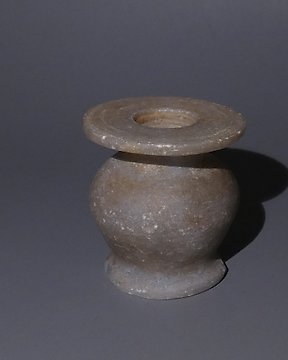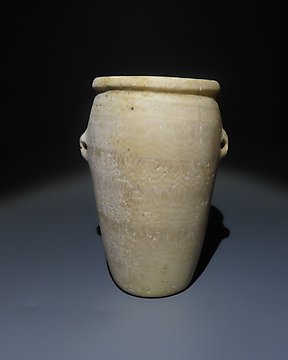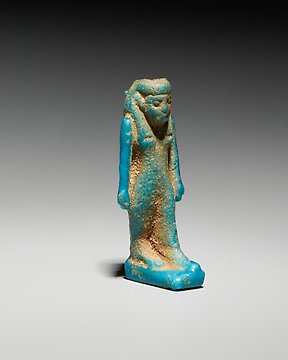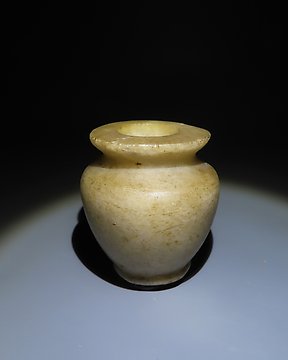
Altägyptisch Anhydrit Kohl-Vase. 1991-1786 v. Chr. 5,5 cm H. Ex. George Csonka. Spanische Exportlizenz.
Catawiki nutzt immer die neuesten Technologien. Sie verwenden derzeit einen veralteten Browser. Aktualisieren Sie bitte Ihren Browser, damit Sie immer alle neuen Funktionen optimal nutzen können.
Über die folgenden Buttons können Sie Ihre Cookie-Einstellungen auswählen. Sie können Ihre bevorzugten Einstellungen ändern und Ihre Zustimmung jederzeit widerrufen. Eine detaillierte Beschreibung aller Arten von Cookies, die wir und unsere Partner verwenden, finden Sie in unserer Cookie-Erklärung.
Nr. 84871217

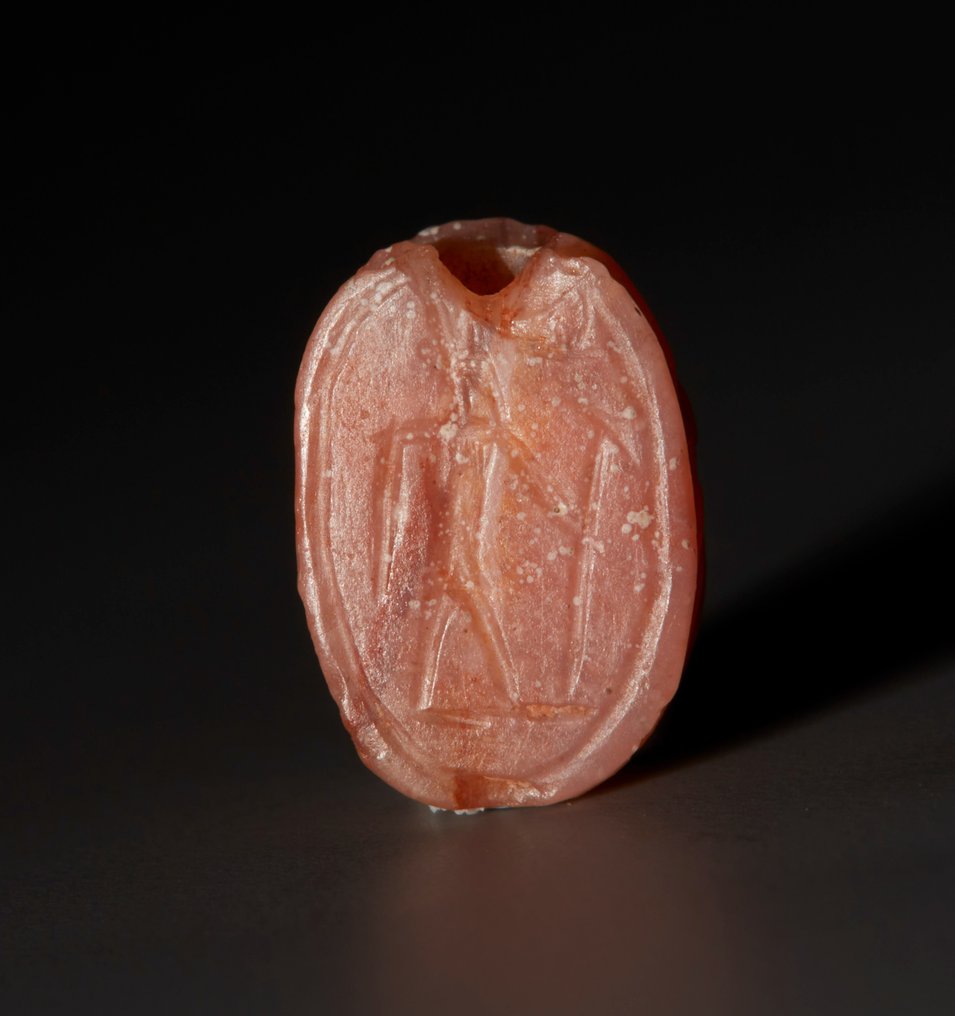

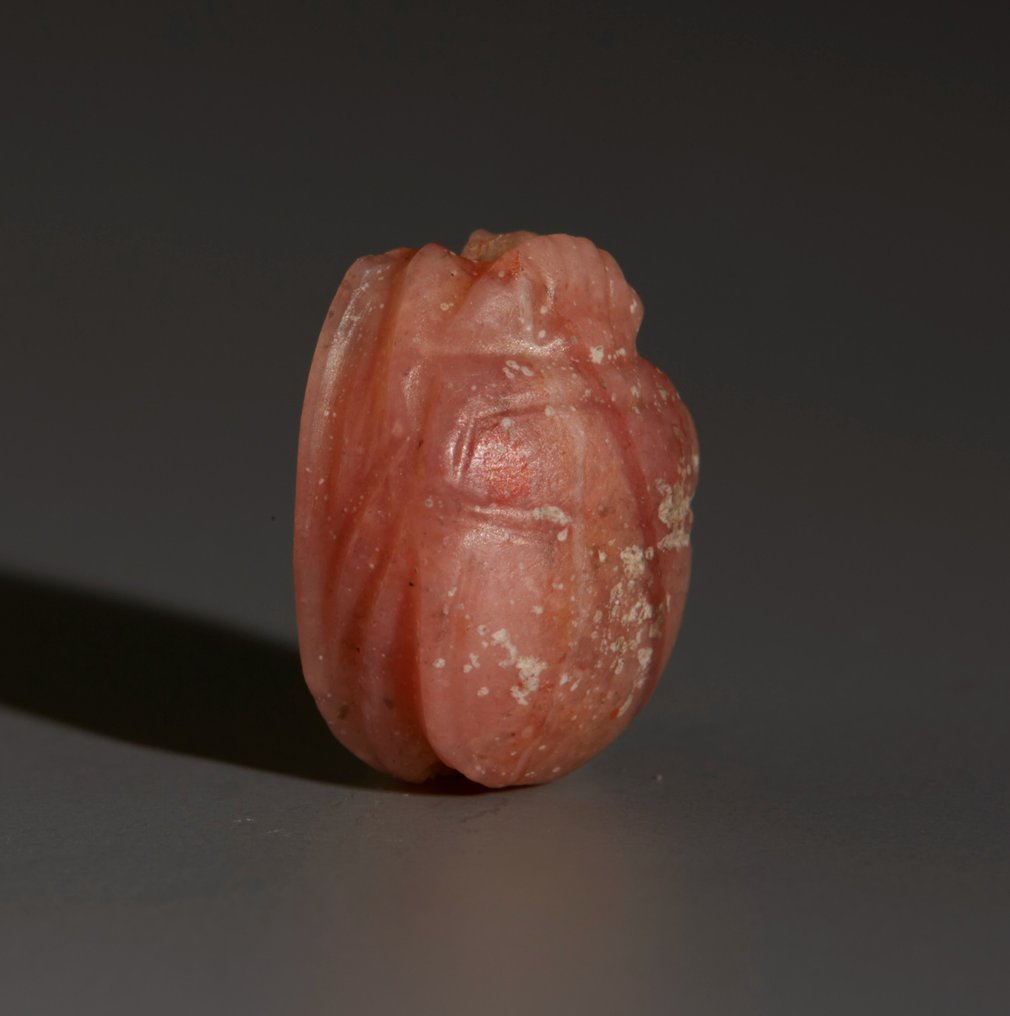
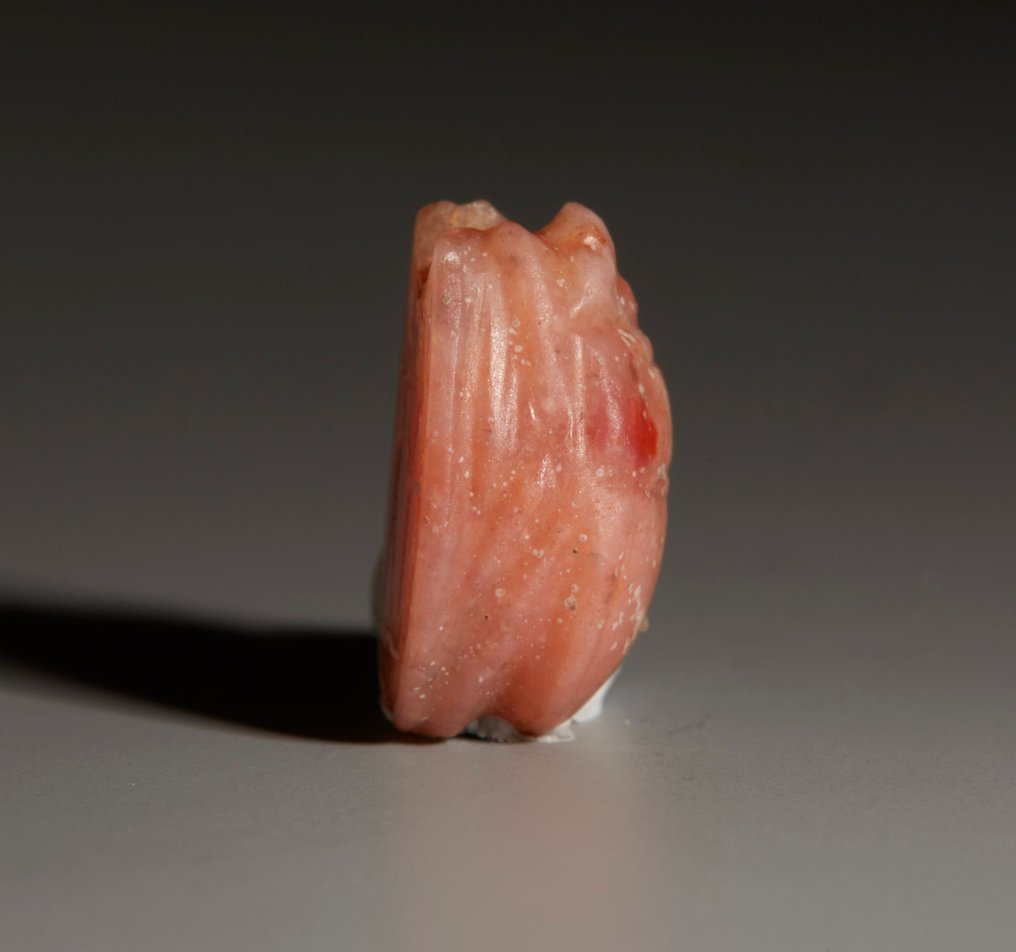
Scarab with the God Seth
- very rare -
Ancient Egypt, Late Period, 664 - 323 B.C.
Carnelian
Height 1 cm
CONDITION: Good see photos.
PROVENANCE: Private collection, François Antonovich, Paris, France. Sold by judicial auction in 2022.
DOCUMENTS: Provided of a certificate of authenticity and export license by the Ministry of Culture.
Seth, ancient Egyptian god, patron of the 11th nome, or province, of Upper Egypt.
The worship of Seth originally centred at Nubt (Greek Ombos), near present-day Ṭūkh, on the western bank of the Nile River. Nubt, with its vast cemetery at nearby Naqādah, was the principal predynastic centre in Upper Egypt. The town lost its preeminent position with the unification of Egypt about 3050 BCE, which was carried out under kings whose capital was Abydos and whose royal god was Horus.
Seth was represented as a composite figure, with a canine body, slanting eyes, square-tipped ears, tufted (in later representations, forked) tail, and a long, curved, pointed snout; various animals (including aardvark, antelope, ass, camel, fennec, greyhound, jackal, jerboa, long-snouted mouse, okapi, oryx, and pig) have been suggested as the basis for his form. Because even the ancient Egyptians rendered his figure inconsistently, it is probably a mythical composite.
The scarab was an amulet of life and power in the form of a dung beetle, animal associated with Khepri, the self-created, Ra as the rising sun. In ancient times it was believed that the beetle was only of the male sex and that it reproduced itself using a dung ball as the ovum. The supposed self-reproduction of the beetle was similar to that of Khepri, who created himself out of the nothing. At the same time, the dung ball which was rolled by the beetle was identified with the sun in its cycle across the heavens. The scarab was, therefore, a symbol of resurrection in Egyptian mythology. In one’s lifetime it provided protection against evil, visible or invisible, supplying strength and power every day. In death, he who wore this amulet had the possibility of resurrection and being granted eternal afterlife.
Notes:
- The piece includes authenticity certificate.
- The piece includes Spanish Export License (Passport for European Union) - If the piece is destined outside the European Union a substitution of the export permit should be requested, can take between 1-2 weeks maximum.
- The seller guarantees that he acquired this piece according to all national and international laws related to the ownership of cultural property. Provenance statement seen by Catawiki.
Scarab with the God Seth
- very rare -
Ancient Egypt, Late Period, 664 - 323 B.C.
Carnelian
Height 1 cm
CONDITION: Good see photos.
PROVENANCE: Private collection, François Antonovich, Paris, France. Sold by judicial auction in 2022.
DOCUMENTS: Provided of a certificate of authenticity and export license by the Ministry of Culture.
Seth, ancient Egyptian god, patron of the 11th nome, or province, of Upper Egypt.
The worship of Seth originally centred at Nubt (Greek Ombos), near present-day Ṭūkh, on the western bank of the Nile River. Nubt, with its vast cemetery at nearby Naqādah, was the principal predynastic centre in Upper Egypt. The town lost its preeminent position with the unification of Egypt about 3050 BCE, which was carried out under kings whose capital was Abydos and whose royal god was Horus.
Seth was represented as a composite figure, with a canine body, slanting eyes, square-tipped ears, tufted (in later representations, forked) tail, and a long, curved, pointed snout; various animals (including aardvark, antelope, ass, camel, fennec, greyhound, jackal, jerboa, long-snouted mouse, okapi, oryx, and pig) have been suggested as the basis for his form. Because even the ancient Egyptians rendered his figure inconsistently, it is probably a mythical composite.
The scarab was an amulet of life and power in the form of a dung beetle, animal associated with Khepri, the self-created, Ra as the rising sun. In ancient times it was believed that the beetle was only of the male sex and that it reproduced itself using a dung ball as the ovum. The supposed self-reproduction of the beetle was similar to that of Khepri, who created himself out of the nothing. At the same time, the dung ball which was rolled by the beetle was identified with the sun in its cycle across the heavens. The scarab was, therefore, a symbol of resurrection in Egyptian mythology. In one’s lifetime it provided protection against evil, visible or invisible, supplying strength and power every day. In death, he who wore this amulet had the possibility of resurrection and being granted eternal afterlife.
Notes:
- The piece includes authenticity certificate.
- The piece includes Spanish Export License (Passport for European Union) - If the piece is destined outside the European Union a substitution of the export permit should be requested, can take between 1-2 weeks maximum.
- The seller guarantees that he acquired this piece according to all national and international laws related to the ownership of cultural property. Provenance statement seen by Catawiki.




